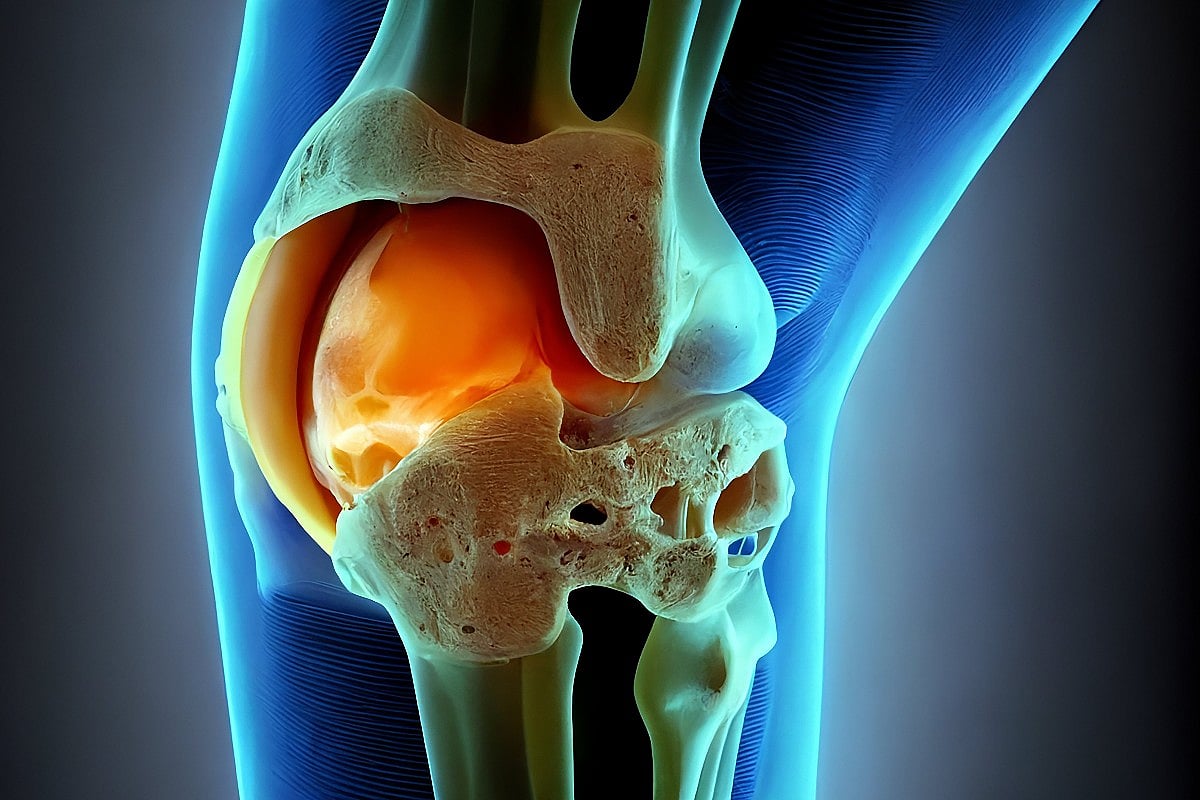Get Healthy!

- Dennis Thompson
- Posted August 6, 2024
When Your Knee Cartilage Wears Out, a 'Biomaterial' Might Help Replace It
A newly developed biomaterial might be able to treat crippling arthritis by prompting the growth of new cartilage, a new animal study suggests.
The bioactive material looks like rubbery goo, but it’s actually a complex biological stew designed to mimic natural cartilage in the body, researchers said.
The biomaterial successfully regenerated high-quality cartilage in the knee joints of sheep within six months.
If successful in humans, the new material could be used to treat osteoarthritis, which occurs when bones rub together after the cartilage separating them wears down, researchers said.
That means the biomaterial could make obsolete the total knee replacement surgery now used to treat severe osteoarthritis. In the surgery, the bone ends are cut away and replaced with titanium, and the cartilage with plastic.
“Cartilage is a critical component in our joints,†said lead researcher Samuel Stupp, a professor of materials science and engineering at Northwestern University. “When cartilage becomes damaged or breaks down over time, it can have a great impact on people’s overall health and mobility.â€
“The problem is that, in adult humans, cartilage does not have an inherent ability to heal,†Stupp added in a university news release. “Our new therapy can induce repair in a tissue that does not naturally regenerate. We think our treatment could help address a serious, unmet clinical need.â€
The new biomaterial combines an essential protein for cartilage growth and maintenance with a modified hyaluronic acid, which is naturally present in both cartilage and lubricating synovial fluid in joints.
“Many people are familiar with hyaluronic acid because it’s a popular ingredient in skincare products,†Stupp said. “It’s also naturally found in many tissues throughout the human body, including the joints and brain. We chose it because it resembles the natural polymers found in cartilage.â€
The goal was to create an attractive scaffold upon which the body’s own cells could regenerate cartilage tissue, researchers said.
They tested the biomaterial by injecting it into the stifle joint, a complex joint in the hind limbs of sheep that’s similar to the human knee.
Sheep cartilage is similarly resistant to regeneration, and sheep stifles and human knees are similar in weight-bearing, size and mechanical loads.
“A study on a sheep model is more predictive of how the treatment will work in humans,†Stupp said. “In other smaller animals, cartilage regeneration occurs much more readily.â€
New cartilage grew to fill defects in the existing stifle cartilage, and the new tissue was consistently high quality.
The findings were published Aug. 5 in the Proceedings of the National Academy of Sciences.
If it works in humans, the biomaterial could fix “the problem of poor mobility and joint pain for the long term, while also avoiding the need for joint reconstruction with large pieces of hardware,†Stupp said.
More information
The Arthritis Foundation has more about osteoarthritis.
SOURCE: Northwestern University, news release, Aug. 5, 2024





